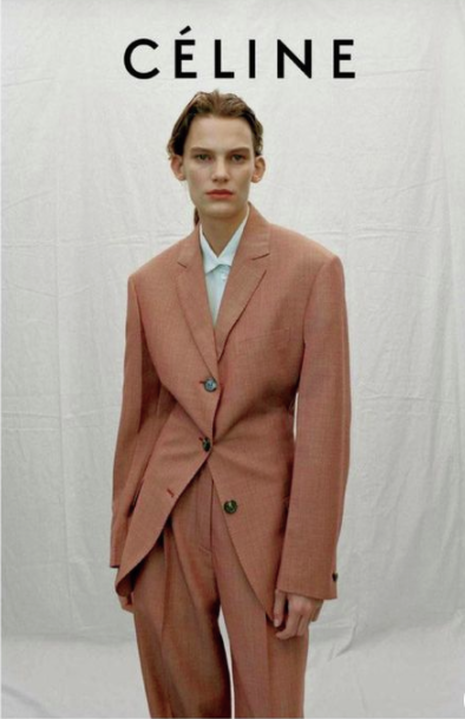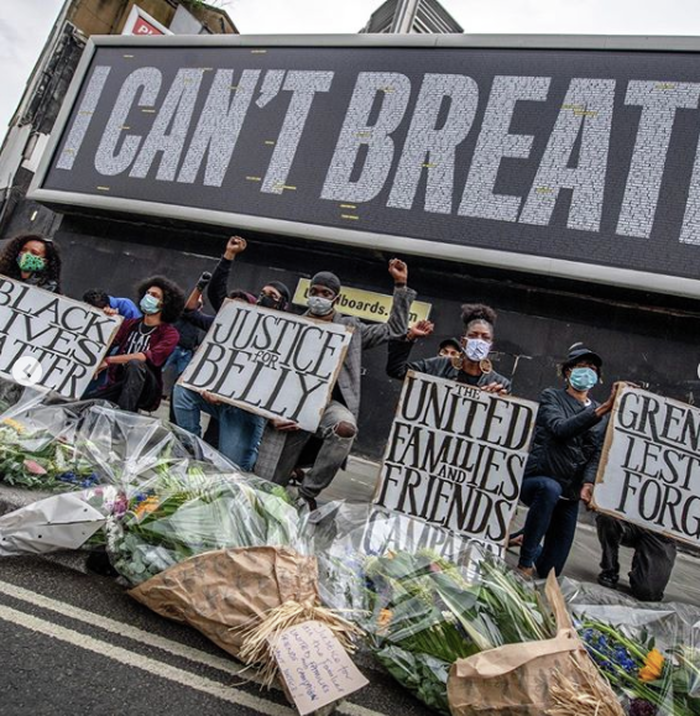A Celebration of Androgyny
Emma Rowley untangles the problematic power dynamics of gendered dressing, and looks to androgyny as a means to bring the wearer closer to their own identity
The boom in so-called ‘androgynous fashion’ has given unheard voices the ability to fully embrace their fashion choices without fear of ostracisation or judgement. Although to some extent reduced to the latest fashion “trend,” it prompted designers to rethink how they created and to reimagine fashion outside the limits of gender. The thus-far continuing popularity and acceptance of androgynous fashion allows the non-binary community in particular to rightfully claim power that may have been taken from them due to their non-conformity. In other words, it is important that fashion portrays androgyny as ‘cool’.

Vogue’s January 2019 edition featured an 8-page spread entitled ‘The New Girl’, which depicted ‘tomboy tailoring,’ featuring female models dressed in a so-called “masculine” way. Vaquela, a more recent brand, takes the opposite approach and tends to dress male models in frilly pink dresses. These inverse approaches encapsulate the idea that it is possible to rewrite the rules of what our clothes ought to say about ourselves; not that we must conform to our biological sex, but that we are able to be fashionable outside of the realm of gender binaries.
For gender equality, it is imperative that no form of gendered dressing is seen as ‘better’ than another. It would be dangerous to suggest that masculinity is the only route to power - that if women were to shake off the shackles of femininity, they would be more likely to be heard. In her manifesto Women and Power, Professor Mary Beard writes of how women in power traditionally dress in a more masculine way; who could forget the iconic pantsuits of Hilary Clinton and Angela Merkel, with frills and dresses seldom seen worn? In Vogue’s January 2019 edition, a spread entitled ‘Power Play’ involves the female model, Adut Akech, posing in front of office buildings donning a range of tailored suits. Although the model is wearing feminine takes on this traditionally male fashion item, such as corsets and bustiers, the spread still seems to imply that a woman should adhere to a male template of power dressing in order to be perceived as powerful. By portraying traditionally masculine dressing as the best option for ambitious women, there becomes little sense of a powerful woman portraying solely ‘I am strong’, but rather ‘I am strong because I am the exception to traditional womanhood’.
More recently however, the fashion industry has been propelling the idea that traditionally feminine dressing can and should be perceived as holding equal power to dressing in a masculine way. We see this by looking at the works of designers such as Molly Goddard, placing both male - and female - bodied models in tulle dresses, her intricate designs making the fabric itself a metaphor for what our perceptions ought to be; that something delicate and feminine also deserves to be seen as strong. This bleeds into the rest of the industry and the bigger brands, for example the Ballet at Dior collection of Spring 2019, where both male and female models were wearing floral designs and tulle. Traditional femininity is evolving out of its binary as something that powerful people of all or no genders are able to wear rather than a symbol of subordination or overt sexuality. Fashion is helping to let the implications of the feminine identity be reclaimed.
Looking forward, androgynous fashion must be normalised within the fashion industry. A wholehearted celebration of androgyny would help visually change perceptions of gender binaries and helps to allow a person of any or no genders to dress how they please without any form of societal judgement. If androgynous and feminine dress are pushed to be seen as having equal status to traditionally masculine dress, the binaries between these constructed categories will soon disappear as they lose their gendered implications. As androgyny gains power, it must be remembered that it is not the best and only way to dress; in order to escape gender binaries, fashion must also embrace traditional masculine and feminine elements of dress in all aspects of life in order to rewrite the rules of gendered perception of clothing. In terms of achieving gender equality, the fashion world must say that all forms of dress are valid.
 News / Uni Scout and Guide Club affirms trans inclusion 12 December 2025
News / Uni Scout and Guide Club affirms trans inclusion 12 December 2025 News / Cambridge Vet School gets lifeline year to stay accredited28 November 2025
News / Cambridge Vet School gets lifeline year to stay accredited28 November 2025 News / Cambridge study finds students learn better with notes than AI13 December 2025
News / Cambridge study finds students learn better with notes than AI13 December 2025 Science / Did your ex trip on King’s Parade? The science behind the ‘ick’12 December 2025
Science / Did your ex trip on King’s Parade? The science behind the ‘ick’12 December 2025 News / Pembroke to convert listed office building into accom9 December 2025
News / Pembroke to convert listed office building into accom9 December 2025








